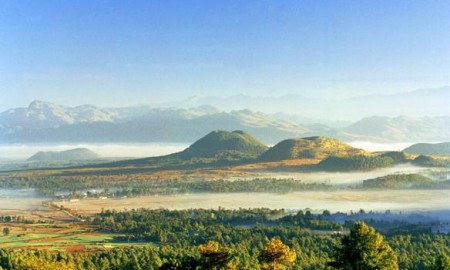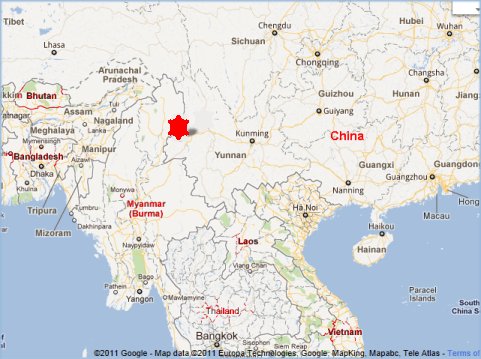|
Our
Beautiful World
|
Volcanoes of Yunnan, China
 Photo: http://explorevolcanoesnow.com/asian-volcanoes/east-asia/taiwan/tengchong-taiwan/ |

Volcanoes
and hot springs On the winding road between Baoshan, about
530 kilometres away from Kunming, capital of Southwest China's
Yunnan Province, and Tengchong, you can see some dormant volcanoes around Tengchong in western Yunnan. "They are the three most well-known dormant
volcanoes near Tengchong, The highest mountain is called Dakongshan,
or the Mountain of the Big Hollow, as it has a deep central
crater Standing on top of these volcanoes, which
have been dormant for 380 years, visitors can easily understand
the There are 97 dormant volcanoes in Tengchong.
Twenty-three volcanoes with intact craters are clustered in
There are a dozen volcano lakes in Tengchong,
among them the most famous one is the Sister Hot springs Although Tengchong's volcanoes have been sleeping
for centuries, people can hear their snore and feel their Lying on the border between China and Myanmar,
Tengchong boasts one of the country's The best known is the Big Boiling Pot; the
water reaches 96 degrees Celsius. Many hot springs have interesting names, such
as the Frog Mouth, the Lion Head, the Drum-Beat Spring, Some of the names have interesting stories
behind them, too. The Pregnancy-inducing Fountain got its
name
|
 ANIMALS over 250 |
 BIRDS over 500 |
 FLOWERS over 225 |







